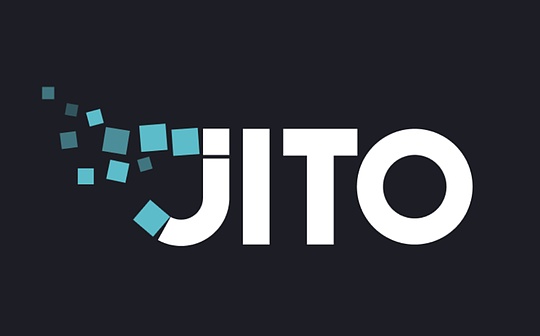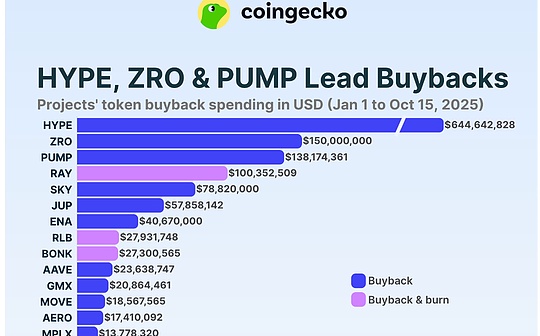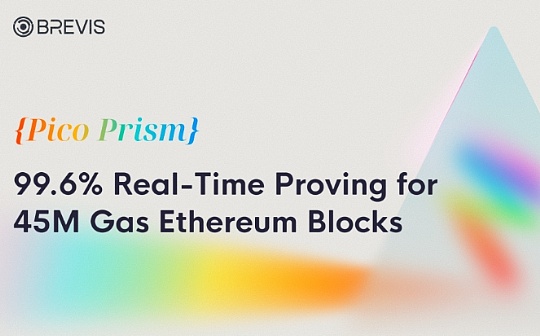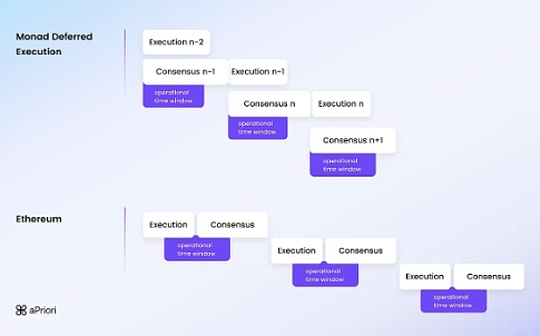
Original title:MEVA and aPriori
Author: Paul Verdittakit, Partner of Pantera; Translated by: 0xxz@Bitchain Vision
The prerequisite for any healthy market is regulation.Financial regulation allows seamless capital exchange, antitrust laws control rent-seeking, and intellectual property laws encourage innovation.On blockchain, since everything is code, the person who writes the code is the person who makes the law.
This power is especially common at the bottom of the blockchain stack – block builders.Competing stakeholders to build blocks determine the success or failure of the blockchain itself; if block production stagnates or incentives encourage predatory behavior, the integrity of the blockchain will collapse and the users will disappear.For example, when Solana faces an interruption, users cannot execute any transactions, meaning they cannot deposit or withdraw tokens.
Block builders are those who physically fetch transactions from the memory pool and build transaction blocks that are then propagated to other blocks to reach consensus on the state of the blockchain.The design of how stakeholders interact with each other during the block building process depends on the company that builds these systems.On Ethereum, Flashbots (Pantera Portfolio) is the first choice.On Solana, Jito is the king.And when Monad is launched, aPriori will dominate.
MEVA
The general term used to describe the problems these companies are seeking to solve is “MEV” or “maximum extractable value.”In short, individuals who sort these blocks traded are motivated to maximize the fees they incur, meaning they may maliciously reorder transactions to maximize their profits and increase the cost of users.
Miner Extractable Value Auction Infrastructure (MEVA) is designed to address the design goals of gas fee stability, competitiveness, and concentration.Most of this boils down to incentives; if stakeholders get financial compensation for adding positive externalities (or eliminating negative externalities) in block construction, they do so.However, there is no perfect harmony.
On Ethereum, the block time is about 12 seconds, and all stakeholders have time to access all transactions and simulate all transactions to maximize their profits.With this in mind, the current gold standard approach on Ethereum is Proposer-Builder Separation (PBS).This setup divides the process into 5 stakeholders: user, block producer, relay, block proposer, and searcher.By separating the block benefit value from multiple stakeholders, they all have the motivation to share information with each other, allowing for competitive building of blocks while ensuring that blocks remain profitable (and thus minimizing failed transactions).But this also has its own problems; block producers have become centralized, and the top two builders have taken more than half of the value from block builds.The application also realizes that they can obtain their own MEVs through mechanisms such as MEV taxes, allowing them to participate in the transaction sorting process and recycle the value that would otherwise flow to the block proposer.
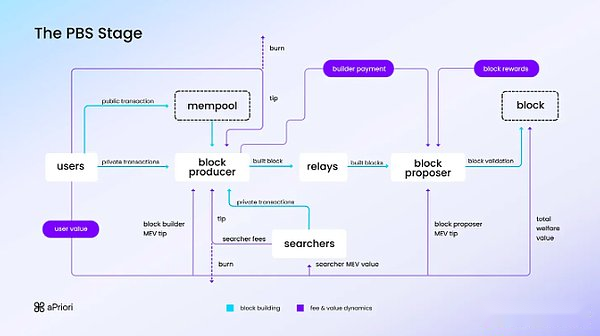
Monad
Monad is an upcoming new chain that will become the most performant EVM ever compatible with Layer 1 blockchain, capable of processing 10,000 transactions per second, with 1 second block time, with single-slot finality and low hardware requirements.One of the innovations to achieve this is to separate the execution layer and the consensus layer, which allows the current block to run its consensus while executing the previous block.Monad Labs raised $225 million and is expected to be the next big L1, and has now accumulated over 300,000 followers on Twitter.
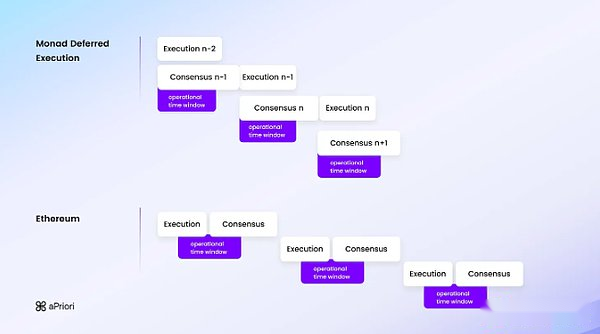
This brings three design challenges:
1. Uncertainty of status:
-
Since the execution of the previous block has not been completed before consensus is reached in the next block, there is no “current” state.
2. Simulate a limited time window for a complete block:
-
Uncertain state and 1 second block time mean that the block builder may not have time to simulate and sort the full transaction blocks to optimize profits.
3. Uncertainty in execution:
-
The probabilistic nature of transaction sorting means that the current architecture may cause the transaction bundle to reverse on the chain, resulting in a higher transaction failure rate, which will harm the user’s interests.
Addressing these issues means designing a cheap architecture that has low transaction failure rates for users while ensuring that stakeholders of block building are still profitable.
aPriori team
aPrioriThe founding team has unique advantages to succeed:
-
Ray , CEO/Co-Founder, Jump Crypto Special Project Experience, Contributor to Python Network, Quantitative Trader at Flow Traders
-
Olivia, Chief Technology Officer, former senior engineer at Coinbase, Bridgewater Investment Company
-
Ed , researcher, former VCRED data scientist and project leader at Los Alamos National Laboratory
The rest of the aPriori team have backgrounds in high-frequency trading, quantitative hedge funds and other top crypto companies.
Liquidity pledge
aPriori plans to use the infrastructure they have already established to launch liquid staking to the platforms running their MEVA.Jito does exactly that, which allows users to stake SOLs and receive some rewards from validators using Jito.Jito’s full dilution value (FDV) is $2 billion and has a monthly revenue of more than $800,000.
Testnet starts
When the Monad Test Network goes live and some final integration is completed, aPriori will launch the mobile staking agreement on the Monad Test Network.aPriori also plans to release the initial version of the MEVA system during the Monad testnet, focusing on the following aspects:
-
Guide searchers and block builders to participate in block space auctions.
-
Promote validator experiments and stress testing client software.
Design MEVA is an essential part of any blockchain’s internal pipeline.Monad’s Hyperparallel EVM L1 is a new ecosystem that requires constant innovation to ensure a good user experience and profitable block builders.The team has the experience, motivation and vision to continue to do so.
During this testnet phase, the team invites parties to participate in the test and provides feedback to work on mainnet preparation as well as further roadmap projects such as protecting RPCS against sandwich attacks and analytics dashboards.

